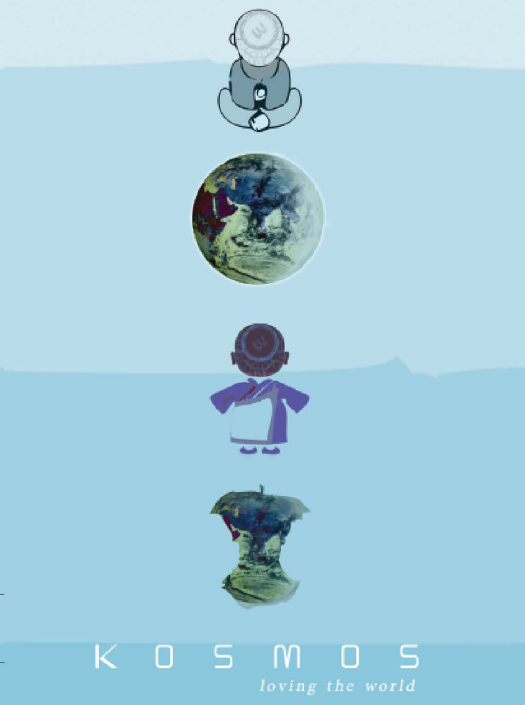The word “satyagraha” is associated with Gandhi’s defense of nonviolence. Satyagraha was one of the most important words to Martin Luther King, Jr. But the power of that word for King wasn’t what we have come to mean by it: “passive resistance.” Rather, King was mesmerized by this word and built his ministry on this word because of what Gandhi really meant by it: “truth force” or “the force of truth.”
If there is one word for the 21st century, it is satyagraha: the force of truth. In a culture that is governed by the love of force, God’s dream would govern us by a very different set of relationships: the force of love and the force of truth.
In a world of heavily rouged religions and heavily rouged people, “real” people of rounded faith like Gandhi and King can seem mightily weird. But Jesus helps us become NOT more straight-edged, straight-laced, ladder- backed and proud human beings. . .
God calls us to be a peculiar people, not ordinary.
You know that Jesus liked anything-but-ordinary, choosing odd ducks and “rare birds” to be his disciples: only a few were married, only a few had ordinary jobs, only a few had compliant dispositions. Although I am not a pacifist, and am struck that in Jerusalem it appears that Jesus let his disci- ples carry daggers for self-defense, daggers which were most likely with them at the Last Supper, disciples of Jesus are more inclined to bare an arm than to bear arms, more embodiments of the force of love than the love of force.
Jesus’ beatitudes rose up the meek and lowly, offering them victory as their “least-of-these” stealth tactics flew under the radar of powers and principali- ties. In fact, in the Jesus Dream there is no “other,” only oneanother. One can no more separate itself from oneanother than a wave can separate itself from the ocean. In spite of academe’s fetishizing the category of the “other,” Jesus recognized no such thing as an “other,” only brothers and sisters and other body-parts. Who is your flesh and blood? Jesus said that everyone is. Jesus redefined “family” to include the whole human family. Can you say to every one, your neighbor and your nemesis, “You are flesh of my flesh and bone of my bone; and I am flesh of your flesh and bone of your bone” [Gen.2.23]. Or in Jesus’ exact words, “Inasmuch as you’ve done it unto the least of these . . .”
Leave it to Gandhi to take Jesus’ “inasmuch” rule and make it into the #1 Test of whether or not you are living God’s dream.
The Satyagraha Dream is a dream of peace, a shalom dream. But there is a new name for peace: justice. Peace is not the absence of conflict [that is death] or the absence of force. Peace is the presence of creative friction and the right kind of force: the truth force of justice and love. The biblical dream is full of conflict and force: turning swords into ploughs that furrow a path to the future, and turning spears into pruning hooks that provide fruit for a hungry and hurting world.
Our goal is not that you become “spiritual,” or enter an enlightened state, or that you get converted and join the “born-again” brigade, or that you become a “better person” or a “better lover.”
Our dream is that Christ will so live in us, and we will so live in Christ, learning to love and care for the world in new and newly emboldened ways. Where love proceeds, truth follows, and grace abounds.
fossores
Dr. David McDonald is the teaching pastor at Westwinds Community Church in Jackson, MI. The church, widely considered among the most innovative in America, has been featured on CNN.com and in the Wall Street Journal, the New York Times, and Time Magazine.
David weaves deep theological truths with sharp social analysis and peculiar observations on pop culture. He lives in Jackson with his wife, Carmel, and their two kids. Follow him on twitter (@fossores) or online at fossores.com
Related posts
Categories
Category Cloud
Tag Cloud
Recent Posts
- Victors and Victims November 6, 2018
- 3 Hacks for Happiness October 29, 2018
- Hope Against Death September 20, 2018
- The Shape Of The Cross September 19, 2018


